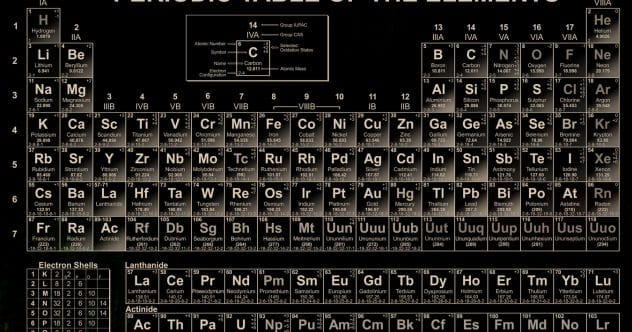We’ve all glanced at the periodic table, those colorful squares filled with what seemed like cryptic symbols during high school chemistry. But hidden among those elements are some truly dangerous ones. So, let’s explore the top ten deadliest elements and why you should avoid them.
Polonium: The Rare and Lethal Rock Star
Polonium, discovered by Marie and Pierre Curie in 1898, is named after Marie’s Polish heritage. This rare element is incredibly dangerous due to its intense radioactivity. Even tiny amounts can severely damage your health by emitting alpha particles that act like wrecking balls to your cells.
Polonium gained notoriety when it was used to poison Alexander Litvinenko, a former Russian spy, in 2006. It’s an enigmatic element best admired from a safe distance.
Caesium: Explosive Reactions and Timekeeping
Caesium, with atomic number 55, is an alkali metal that reacts explosively with water. Its primary claim to fame is its use in atomic clocks, which are so precise they can measure time to a few billionths of a second.
Though rare in nature, you might find it in minerals like pollucite, or even in traces on asteroids and moons. However, because of its high reactivity and radioactive isotopes, it’s best left to the scientists.
Arsenic: The Notorious Villain
Arsenic is infamous for its toxic effects on humans, plants, and mythical creatures alike. Found naturally in the earth’s crust, it’s used in small doses in semiconductors, wood preservatives, and some medicines; however, high concentrations can lead to severe health issues like skin problems and cancer.
Historically, arsenic has been a popular poison in murder mysteries and political schemes, with even Napoleon Bonaparte suspected of being exposed to it.
Thallium: The Silent Poisoner
Thallium, residing just below mercury on the periodic table, is a soft, malleable metal. Dubbed “the poisoner’s poison,” it is highly toxic. You’re unlikely to encounter it daily since its primary use is in specialized semiconductors.
When handling thallium, it’s best to leave it to experienced professionals due to its dangerous properties.
Lead: The Historical Troublemaker
Lead, symbolized as Pb, has been a source of trouble since the Roman Empire, who used it in plumbing without understanding its dangers. Lead poisoning can cause neurological and developmental issues, particularly in children.
Despite its toxicity, lead is still used in industrial applications like batteries and radiation shielding. Just remember, keep it away from your mouth!
Francium: The Rare and Explosive Element
Francium, discovered in 1939, is incredibly rare and unstable, with a half-life of just 22 minutes. This radioactive element instantly combusts when exposed to air.
Though it has no practical applications due to its instability, francium is valuable in studying nuclear reactions, making it a favorite among daring chemists.
Mercury: The Liquid Silver with Toxic Secrets
Mercury is the only metal that’s liquid at room temperature, giving it a sleek and mysterious allure. Its symbol, Hg, comes from “hydrargyrum,” meaning liquid silver.
Though once used in thermometers, mercury’s toxicity has led to its phase-out in many applications. Exposure can cause severe health issues, so handle with extreme caution.
Antimony: The Quirky Metalloid
Antimony is a metalloid, displaying properties of both metals and non-metals. With a bluish-white hue, it was historically used in cosmetics, though this practice was harmful.
Interestingly, antimony has a dual personality. It is used in flame retardants, making it a fire safety hero, but can also cause health issues if ingested in large quantities.
Cadmium: Hidden Powers and Dangers
Cadmium is a heavy metal known for its corrosion resistance, making it useful in plating other metals, particularly in aerospace parts. It also absorbs neutrons, making it valuable in controlling nuclear reactions.
However, cadmium can contaminate soil and water, posing significant risks to ecosystems and human health, so careful handling is essential.
Plutonium: The Radioactive Heavyweight
Plutonium, named after Pluto, is a radioactive heavy metal synthesized in nuclear reactors and laboratories. A key ingredient in nuclear weapons like the Fat Man bomb, it is also used in nuclear energy production.
Plutonium also has applications in powering spacecraft and in certain medical treatments. Remember, it requires careful handling!
These elements, each with unique properties and dangers, remind us of the importance of understanding and respecting the power of chemistry. Stay informed, stay safe, and appreciate these elements from a distance!
Which of these elements surprised you the most? Leave your comment below!










